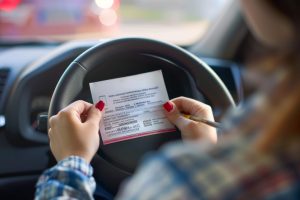Getting the right license is key for driving safely and legally, whether it’s for work or personal use. If you’re thinking about becoming a professional driver or just want to know the difference between commercial vs non-Commercial license in Ontario, it’s important to understand how they differ. In this blog, we’ll explain everything you need to know about CDL and non CDL licenses. Keep reading to get a clear picture of what’s required!
What is a Commercial Driving License?
In Ontario, a Commercial Driving License (CDL) lets you drive bigger vehicles like trucks, buses, and other heavy-duty vehicles for work. Here’s a quick look at the different types of commercial licenses you can get:
Class A Driving License
Class A driving license is the top-level commercial license. It lets you drive any truck or tractor-trailer combination, including vehicles that pull double trailers. So, if you want to drive those big rigs you see on the highway, you’ll need this license.
Class B Driving License
If you want to drive a school bus with more than 24 passengers (the bigger yellow buses), you’ll need a class B driving license. This includes being responsible for the safety of students, so it comes with extra training.
Class C Driving License
A non-CDL class C driving license is similar to Class B, but this license is for driving regular buses, not school buses. Think of city buses or coaches that hold over 24 passengers.
Class D Driving License
This license is for operating heavy trucks that weigh more than 11,000 kg. You can also tow smaller trailers weighing up to 4,600 kg with this license. Class D driving license is a common license for people working in delivery or construction.
Class E Driving License
If you’re interested in driving smaller school buses or school-purpose vehicles that carry 24 passengers or fewer, Class E driving license is what you’ll need.
Class F Driving License
With a Class F driving license, you can drive ambulances and smaller school buses with 24 passengers or fewer. It’s a popular option for those who want to drive medical vehicles or smaller transport services.
Class Z Driving License
This is an endorsement, not a full license. If you plan to drive a vehicle equipped with air brakes (often found on big trucks and buses), you will need a Class Z driving license. It involves extra training on how air brakes work and how to handle them safely.
What is a Non-Commercial Driver’s License
A Non-Commercial Driver’s License is what most people in Ontario get when they want to drive a car, van, or small truck for personal use. This is called the Class G license. It’s meant for private driving, not for work that involves big trucks or buses.
The Class G license follows a graduated licensing system in Ontario, which means you start with more restrictions and work your way up to full driving privileges. Here’s how it breaks down:
- G1 (Learner’s Permit): The G1 license is your first step toward becoming a fully licensed driver. To get it, you need to pass a written test on road rules and signs.
- G2 (Probationary License): After holding your G1 for at least 12 months (or 8 months if you take an approved driving course), you can take a road test to get your G2. With a G2, you have more freedom to drive alone, but there are still a few restrictions.
- Full G License: After 12 months with a G2, you can take a second road test to get your full G license. Once you pass this test, you’ll have complete driving privileges
Differences Between Commercial and Non-Commercial Licenses
Let’s break down the key differences between commercial and non-commercial licenses. Here’s what sets them apart in some main areas:
CDL/ Non-CDL Costs
Getting a Commercial Driver’s License (CDL) costs more because you need to complete special training, like the MELT course and pay for tests, licenses, and regular medical exams. While CDL drivers can earn higher wages, the upfront and ongoing costs are a big factor.
On the other hand, a non-commercial license is cheaper. You only pay for knowledge and road tests, along with regular renewals, without the need for expensive training programs.
Training and Skills for CDL and Non-CDL Driving License
To get a Commercial License, you need extra training in things like cargo safety, inspecting your vehicle, and defensive driving for large vehicles like buses or trucks. You may also need special endorsements for skills like handling hazardous materials or air brakes.
A Non-Commercial License focuses on basic driving skills and knowledge of traffic laws. The road test and written test are simpler compared to the detailed training for commercial driving.
Medical and Rules for CDL or Non-CDL
For a Commercial License, you must pass medical exams to make sure you’re fit to drive heavy vehicles, with regular check-ups, especially if you’re older or have certain health issues. CDL drivers also have strict rules about how long they can drive without resting to avoid fatigue.
For a Non-Commercial License, you only need to pass a vision test and meet basic health standards. The rules aren’t as strict as they are for commercial drivers.
Vehicle Flexibility for CDL/non-CDL
A Commercial License allows you to drive big, complicated vehicles like trucks with trailers, buses, or any vehicle used for business purposes. You may need extra endorsements, such as for driving vehicles with air brakes or carrying hazardous materials.
A Non-Commercial License only lets you drive regular vehicles like cars and small trucks. You can’t operate heavy trucks, buses, or any vehicle used for work.
Closing Thoughts
Choosing the right license is crucial for driving legally and safely in Ontario, whether for personal or commercial use. Understanding the distinctions between commercial and non-commercial licenses will help you make informed decisions about your driving career or personal needs. Always prioritize safety, follow the regulations, and stay updated with your certifications to ensure a smooth driving experience.
FAQs
No, you can’t legally drive most commercial vehicles with a regular license. However, some smaller jobs, like driving for rideshare services or small delivery trucks, might not need a commercial license.
Driving a commercial vehicle without a CDL can lead to serious penalties. You could face big fines, your vehicle could be taken away, and you might even go to jail. Both you and your employer could also be hit with legal penalties, including civil charges.
Getting a CDL usually takes longer than a regular license because of the extra training and testing. It can take anywhere from a few weeks to a few months, depending on where you are and if you need special endorsements. A regular license can be earned in just a few days or weeks after passing written and road tests.
Yes, the age requirements are different. To get a CDL, you need to be at least 18 to drive within your state, and 21 to drive across state lines. For a regular license, you usually need to be 16 or 18, depending on where you live.
Yes, you can transfer your CDL to another U.S. state through a simple process where you verify your CDL and pass any local tests. If you want to transfer it to another country, it depends on the agreements between countries, and you may need to take additional tests and get a new license.
If you lose your license, you’ll need to go to your local Department of Motor Vehicles to apply for a replacement. The process is usually easy, but CDL holders might have to go through more verification steps due to the nature of commercial driving.





